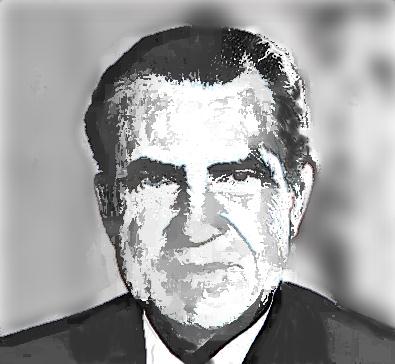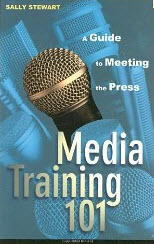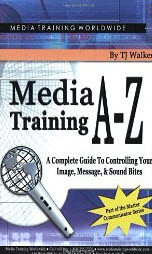Source of article Jury Insights.
 |
| “I am not a crook.” |
Communicating with the Media
Preparing Content
In my previous post, Part I, (see Aug. 27 post) I discussed (a) how the Rules of Professional Conduct limit what an attorney can say to the media, and (b) how to deal with a telephone inquiry from a journalist. This post focuses on some things the attorney should consider in preparing content for a media interview.
Preparing for a media interview has a great deal in common with preparing case themes for opening statement at trial, as well as working with fact and lay expert witnesses (think engineers) in preparation for depositions and trial testimony. Case themes define talking points, and help map out the landmarks and potential landmines for a media interview.
A useful exercise is to first reduce the explanation of your case to three thematic statements, and then explain each statement with a paragraph of supporting text on one double spaced page. Just like in high school English (and usually hammered into the minds of journalists) you want to put your thematic talking point into the initial paragraph sentence before you explain it.
If you do this well, the quality of your opening statement, witness preparation and, if it should happen, media interview will be enhanced dramatically.
Speak to the interviewer, and the interviewer’s audience…
In the media interview, the journalist is NEVER interested in the breadth and depth of your knowledge about your case. Think in terms of what will engage the journalist’s audience. Is it the New York Times, the Seattle Times, NPR or Sean Hannity? What do you anticipate to be the journalist’s most likely “angle” for his/her audience?
For print media the interviewer is often looking for one quotable line to embed in the middle of a paragraph within the final story. Try to limit what you say to content that will interest the journalist’s audience. Your job is to provide quotable lines.
KISS ’em…
KISS is a term I first heard several decades ago; it stands for “keep it simple, stupid.”
You will want to try to state your themes in short sound bites using as few words as possible. For example, Combining Sound Bites Try to get as many of your three sound bites in one answer. During Mitt Romney and Paul Ryan’s first media interview on 60 Minutes with Bob Schieffer, each candidate did his best to exemplify this concept. Romney: [within a single response] Paul is a leader…with a vision of getting the country back on the right track… with a passion for making a difference… Ryan: [within a single response] I have done everything I can [passion] as chairman of the budget committee to try to make a difference… I have seen people hungry for solutions, for leadership... I think we can get this country back on the right track. 30 seconds later… Ryan: [within a single response] …he told me that I had the kind of experience to complement his [leadership values and style]… to execute a vision, to get this country back on the right track. Frame statements in the positive and not the negative… You do not want to repeat a negative or prejudicial part of the interviewer’s question in your answer. If the interviewer’s question starts with, “Many people have said that your client has not been truthful with regard to…,” you do not want to start your answer with “My client has not lied with regard to…” You may remember Richard Nixon stating, “I am not a crook” or Christine O’Donnell asserting, “I am not a witch.” It did not help either one of them. Psychologically, in order to form the negation “the dog is not chasing the cat,” it is necessary to imagine a dog chasing a cat and conceptually perform the equivalent of applying the ‘universal no’ (circle with slash icon) to the image of ‘chasing.’ Negation tends to reinforce the original presupposition in the mind of the reader or listener. Start your response to frame your client’s behavior in the positive, “My client has responded to every question fully, accurately and appropriately” before going on address talking point content. Remember that your purpose is to solve the problem that is the focal point of the interviewer’s story angle, anchoring what you say to your talking point themes and facts. Comment versus No Comment Sally Stewart in Media Training A-Z says, “Never say ‘no comment,'” as this will permit the journalist to apply his/her personal bias to your omitted response. She also cautions against the various forms of bending the truth whether it is called fudging, skirting the issue, spinning, or exaggerating; it’s a bad idea to assume that the journalist will not discover the misrepresentation. Powerful yet dangerous content techniques… There is an upside and downside to the use of controversial statements, metaphors and analogies, pop-culture references and humor. All of these content techniques may be incredibly effective when done well, but when poorly performed, can wreak disaster. Examples of shooting from the hip– right into one’s foot: Todd Akin’s controversial comment that a woman’s body “shuts down” during “legitimate rape” to prevent pregnancy will probably cost him an election. How about this indecipherable set of mixed-metaphors–a ‘can of worms’ ‘fished up’ in a press release for Newt Gingrich: The literati sent out their minions to do their bidding. Washington cannot tolerate threats from outsiders who might disrupt their comfortable world. The firefight started when the cowardly sensed weakness. They fired timidly at first, then the sheep not wanting to be dropped from the establishment’s cocktail party invite list unloaded their entire clip, firing without taking aim their distortions and falsehoods. Now they are left exposed by their bylines and handles. But surely they had killed him off. This is the way it always worked. A lesser person could not have survived the first few minutes of the onslaught. But out of the billowing smoke and dust of tweets and trivia emerged Gingrich, once again ready to lead those who won’t be intimated by the political elite and are ready to take on the challenges America faces. In a pop-culture screw-up, Bernie Goldberg, during an interview with Bill O’Reilly, described a photo of himself with rapper Ice Cube, by saying he was with Ice T (a different rapper). O’Reilly (who would have thought?) knew it was Ice Cube and challenged Goldberg, derailing whatever point Goldberg was trying to make. Recently, Mitt Romney got unwanted attention for making a”birther” joke that, “No one has asked to see our birth certificates. They know that this is the place we were born and raised.” And, who can forget Larry Craig’s “I am not gay” denial followed by the unintended humorous explanation of his bathroom stall behavior as a “wide stance” approach to getting down to business. Prepare a final punch line… It is also important that you prepare a concluding comment or final punch line that you can use if you get the opportunity for the last word. For example, “Thank you. We are looking forward to doing our part to stop cowboy justice from occurring in the future.” What do you do if you’re interview takes place in a TV isolation room–just you and the eye of the camera staring back at you? In Part III, I will discuss media interview presentation style and behavior. Media Training References As previously noted in Part I, I have found two short paperbacks to be very helpful: Media Training 101 by TJ Walker, and Media Training A-Z by Sally Stewart. 

